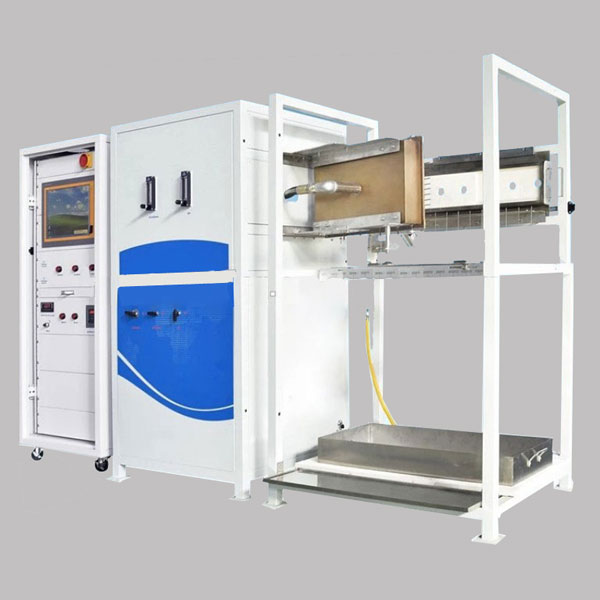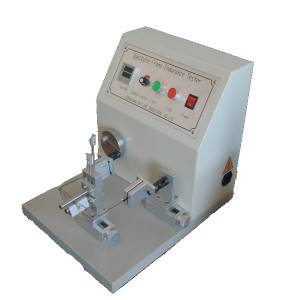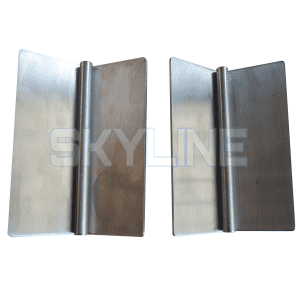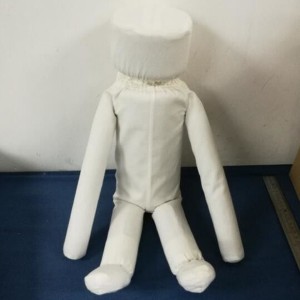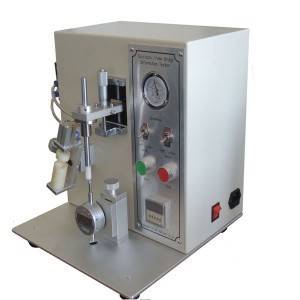EN 45545 Spread of Flame Tester
Spread of Flame Tester With Computer and standard test software control
Product Introduction of Spread of Flame Tester
Sprea of flame tester is used to evaluate combustion characteristics of rail materials and ship materials and measures spread rate of flame, flame for ignition by distances, CFE (Critical Flux at Extinguishment) and total heat release. This test method is originated from ISO 5658-2 (Reaction to fire testsSpread of flame- Part 2 Lateral spread on building products in vertical configuration) and measures combustion characteristics of vertical specimen (155mmX800mm).
ISO 5658-2 : Reaction to fire tests Spread of flame - Part 2 Lateral spread on building products in vertical configuration
IMO Resolution A. 653(16): Recommendation on fire test procedures for flammability of bulkhead, ceiling and deck finish materials
ASTM E 1317 : Standard test method for flammability of marine surface finishes
Product parameters of Spread of Flame Tester
|
Dimensions |
2200 mm (W) x 2120 mm (H) x 1100 mm (D) |
|
Weight |
128kg |
|
Electricity requirements |
220 V, 10 Amps |
|
Ambient temperature |
10°C to 35°C |
|
Calibration gas |
methane |
|
Combustion gas |
propane or methane |
|
Standards |
ISO 5658-2-2006、CSN EN 45545-2+A1:2015、 IMO FTPC Part 5, IMO Res.A.653 (16)、 |
|
Applications |
rail transit, shipping materials, other fields |
Product Performance characteristics of Spread of Flame Tester
1. The test instrument consists of four main components: a set of radiation plate brackets and a set of sample brackets, which are connected together to form the required structure with radiation plate, sample bracket and ignition burner.
2. The radiation plate provides a radiation surface of about 480 mm X 280 mm, and the metal screen is provided on the radiation front to increase the radiation.
3. Air source of radiation plate is provided by blower, and frequency converter is used to regulate it.
4. Use propane mass flow controller to regulate gas source, cooperate with Venturi mixer, mix with air, and provide combustion gas source for radiation plate.
5. Providing a porous calibration plate and moving track of a sliding heat flow meter can detect whether the heat radiation flux meets the requirements of the standard.
6. Water-cooled heat radiation flux sensor, which is used to measure the heat radiation flux curve of radiation plate.
7. Portable water cooling circulating device can take away the surface heat of heat flow meter.
8. The ceramic tube burner can directly act on the surface of the test sample by open fire.
9. Rotor flowmeter can provide mixed combustion gas for ceramic tube burner.
10. Mass flow controller can easily measure the heat of methane by measuring the critical heat flux.
11. According to IMO test standards, thermocouple devices can be provided to measure heat release rate and other related parameters.
12. The methane calibration burner and methane mass flow controller can provide 1KW and 3KW flame temperature.
13. During the test, the camera can observe and save the measurement state in the program.
14. Equipped with an angle-adjustable observation mirror, the flame spreading rate can be observed through glass mirror and sample rake during the test, and can be recorded automatically by foot switch.
15. Computer and standard test software are used to control the test process.
Product Feature of Spread of Flame Tester
The apparatus consists of a radiant panel having dimensions of 280 x 483 mm, mounted vertically, and making an angle of 15° with the specimen.
The orientation of the panel results in an incident radiant flux that decreases from 50 kW/m² at one end to approximately 1 kW/m² at the other end of the specimen.
The sample is ignited by a non-impinging, gas/air pilot flame.
Viewing rakes placed at a 50-mm spacing along the specimen.
Heat Flux Meter - for setting the irradiance level at the surface of the specimens, the range from 0-50KW/m2.
Portable water cooling system without need for waterworks and plumbing when using the Heat Flux meter.
The radiant burner system is fully automatic, with spark ignition and safety interlocks.
MFC (Mass Flow Controller) to easily measure the heat amount of methane gas in measuring critical heat flux.
Camcorder to observe and save test conditions in a program during tests.
To meet the IMO specification a stack is fitted complete with thermopile for estimating heat release rate.
Records the spread rate of flame after this records ignition and extinguishment time of flame for each distance of specimens. And the other test results is Heat for ignition (MJ/㎡), Heat for sustained burning (MJ/㎡), Critical flux at extinguishment (kW/㎡), Average heat for sustained burning (MJ/㎡), Total heat release (kW),Peak heat release rate (kW) .
How is flame spread measured?
Flame spread rating is calculated by the distance a flame travels across a material, divided by the amount of time it takes to travel that distance. Testing for flame spread rating involves burning materials under controlled conditions and measuring the speed and extent of flame spread.
What is spread of flame test?
Flame spread tests aim at measuring the tendency of a flame to propagate over a substrate and directly correlate to surface flame propagation in a real fire scenario.

